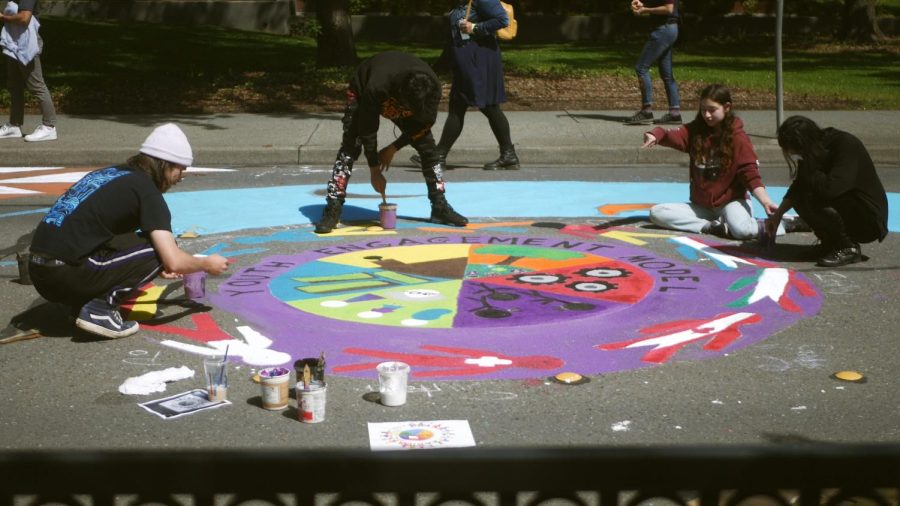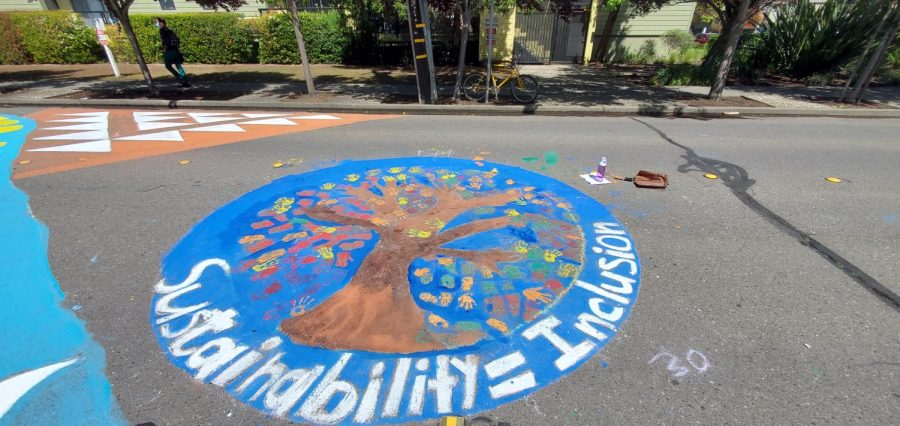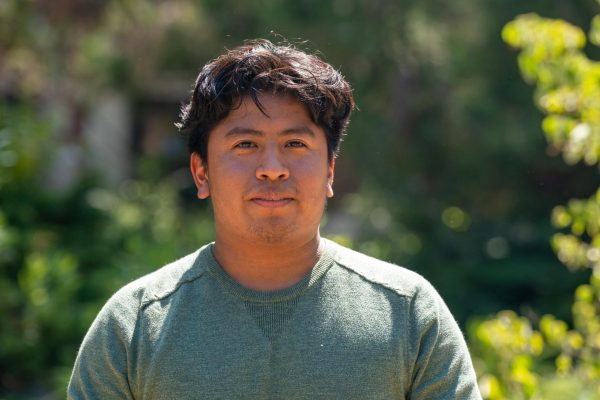Students, families and volunteers came together to paint murals that spanned the whole of Elliott Avenue for Santa Rosa Junior College’s Earth Day event Friday.
The event started at 9 a.m. April 22 on the street that separates Plover, Race and Emeritus from the rest of the Santa Rosa campus. The Student Life program provided participants with paints and brushes, along with coffee and snacks. Each group of volunteers painted 12-foot circular murals in their designated spaces with unique designs from worldwide cultures.
Many painters turned out to show awareness for climate change. SRJC student Daisy Lopez said she came to help her community. “This is serious; things are changing too fast,” she said.
Student Maria De La Cruz said the event was a good chance to connect person to person. She, too, expressed concern about climate change. “It’s ridiculous how the warmer weather is already starting to set in before summer rolls in,” she said.
Connecting all of the murals together was a ribbon of blue paint with monarch butterflies flying through them. Martin Zuniga, one of the painters, explained that the blue streak represented monarchs’ path in the sky, as they migrate from Canada to Michoacán, Mexico, each year. “It’s long and it’s far, and that’s what people who migrate experience,” he said.
Zuniga explained the reason the monarchs connect the individual murals together is because when people migrate, they migrate together. The trail of butterflies represent the connections between the different cultures. “If perfect migration was allowed, imagine what would change,” he said.
Painters also created Native American basket weaving patterns along the street. Zuniga explained that we are on their land, so they must always be present. The basket also shows how the community is woven together.
Local organizations also set up tables to contribute to Earth Day awareness. Christine Hoex represented Sonoma Transit Riders United, an organization that fights to improve the transit system because of public transportation’s environmental and equity benefits. “It’s like an artery and should be first, for the environment and for equity,” she said.
Hoax has lived in Sonoma County for more than 40 years and shared her experiences with heat in the summer. “Heat waves in the summer seem longer and hotter. It’d be super hot and we’d try to fry an egg on the sidewalk, but now we’ve gotten used to it.” she said.
The California Homemakers Association booth provided information on its program, which helps low-income workers and their families with food, clothing, child care and medical care. Greg Lomakin said the group wants to call on all levels of government to address climate change. “The solution is not jacking up rates on people who can’t afford utilities,” he said.
Lomakin believes that eliminating poverty and preserving the planet go hand in hand. He pointed out that agricultural workers, who help grow our food, are paid low wages in contrast to factory executives. “We want to build a voice so that decisions protect our people and our planet, not just profit,” he said.







